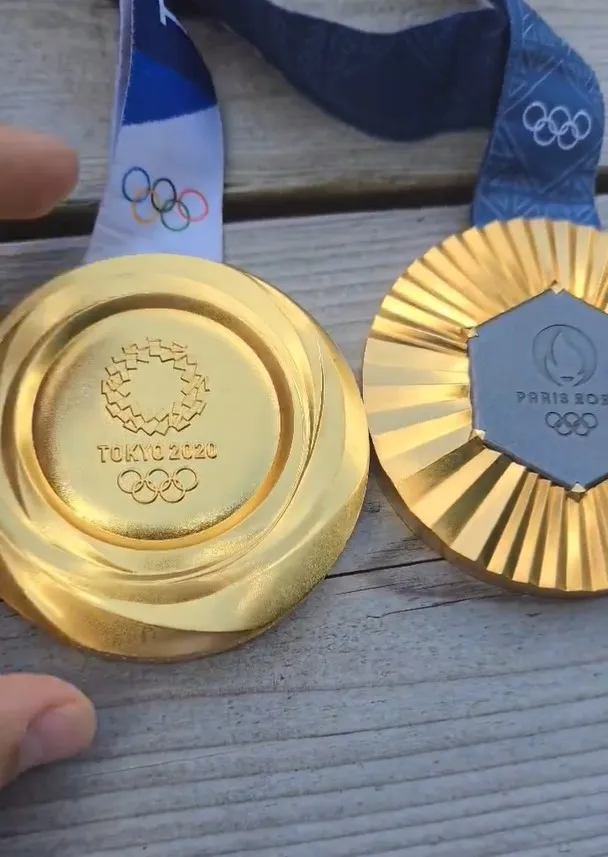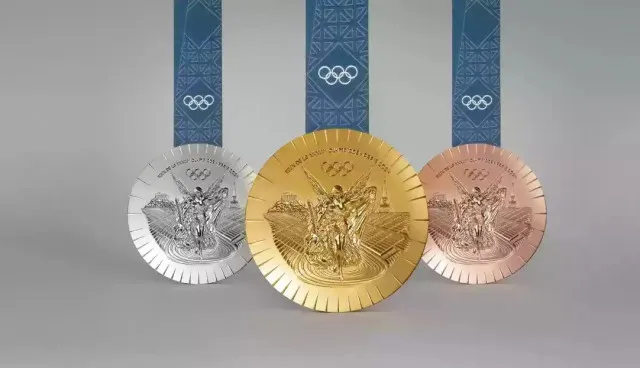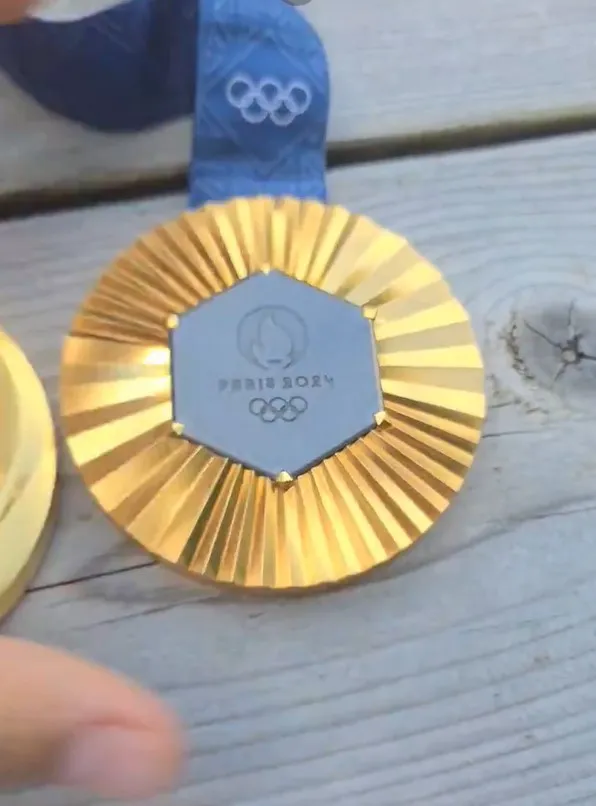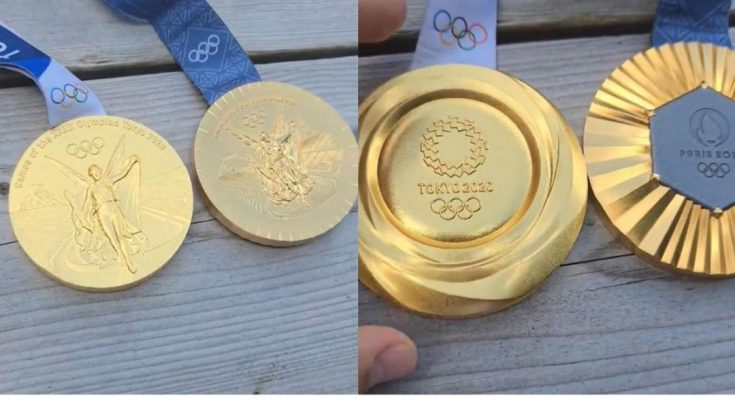The 2024 Paris Olympics were meant to be a grand celebration of athletic excellence, but the shine has quickly worn off for some competitors – literally. Recent reports have highlighted a noticeable difference in the quality and appearance of the gold medals awarded in Paris compared to those given out at the previous Tokyo 2020 Olympics. This unexpected issue has sparked a debate about the standards, materials, and overall craftsmanship of the Olympic medals.

An athlete highlights differences between Tokyo 2020 and Paris 2024 gold medals. Image Credit: Twitter/@ViktorAxelsen
As the dust settles on the Paris Games, athletes are taking a closer look at their hard-earned medals. Danish badminton player Viktor Axelsen, who won gold in both the 2020 and 2024 Olympics, provided a side-by-side comparison that clearly illustrates the stark difference in quality.
Axelsen’s Tokyo 2020 gold medal retained its brilliant, gleaming appearance, exuding the prestige and grandeur one would expect from an Olympic champion’s prize. However, his Paris 2024 gold medal already appears dull, tarnished, and significantly less impressive in comparison.
Officials from the Paris 2024 organizing committee have acknowledged the issue and promised to address any “damaged” medals. They attribute the change in appearance to the composition of the medals, which contain a higher percentage of silver and recycled materials from the Eiffel Tower, unlike the Tokyo medals that incorporated recycled electronics.
This difference in the metal alloy and materials used seems to contribute to the more rapid oxidation and dulling of the Paris 2024 medals. While the organizers have pledged to replace any medals that deteriorate, the initial impression has left many athletes and fans disappointed.

Axelsen’s Tokyo 2020 gold medal shined, while Paris 2024 appeared dull. Image Credit: Twitter/@ViktorAxelsen
For athletes who have dedicated years of their lives to reaching the pinnacle of their sport, the Olympic medal is a symbol of their hard-won triumph. However, the noticeable decline in the quality of the Paris 2024 medals has left some feeling that their achievement is not being properly celebrated and recognized.
Team USA skateboarder Nyjah Huston, who earned a bronze medal in Paris, shared a photo showcasing the rapid tarnishing of his medal just a week after receiving it. This prompted widespread comparisons on social media, with many users echoing the sentiment that the Paris 2024 medals look more like “a chocolate wrapper” than a prestigious Olympic prize.

The appearance change is due to the metals used. Image Credit: Getty
The debate surrounding the Paris 2024 medals has sparked a wider discussion about the importance of maintaining the quality and prestige of the Olympics. Some have argued that the appearance of the medals should not overshadow the immense accomplishments of the athletes, while others contend that the medals are a crucial part of the global spectacle and should reflect the grandeur of the event.
The reaction on social media has been mixed, with some users expressing disappointment and even outrage over the perceived decline in quality. One commenter went as far as to say, “It’s one thing after another, what did Paris get right, and where did they spend the money, has to be one of the worst Olympic games ever.”

Paris 2024 medals use Eiffel Tower materials, unlike Tokyo 2020’s electronics. Image Credit: Twitter/@ViktorAxelsen
The tarnishing of the Paris 2024 Olympic medals has become a unexpected blemish on an event that was meant to showcase the pinnacle of athletic achievement. While the organizing committee has promised to address the issue, the initial impression has left many athletes and fans feeling that the prestige and grandeur of the Olympics has been diminished.
As the world’s top competitors continue to voice their concerns, it remains to be seen whether the Paris 2024 organizers can rectify the situation and restore the luster and significance of the Olympic medals. Ultimately, the true value of these accolades lies in the immense sacrifices and triumphs of the athletes, but the physical representation of their accomplishments should also be a source of pride and inspiration



